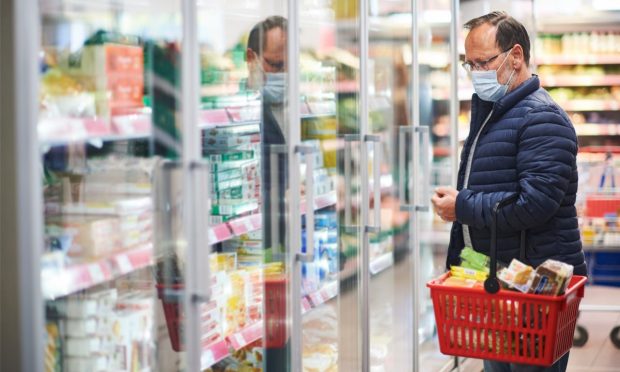Kroger’s Home Chef Sales Soar as Consumers Seek Alternative to Increasingly Costly Restaurant Delivery

Consumers increasingly expect simple, convenient ways to get their food needs met, but most are not willing to bear the cost of on-demand restaurant delivery every day. On Monday (Oct. 25), grocery giant Kroger announced that its Home Chef brand, which provides meal kits and heat-and-eat meals, has exceeded $1 billion in annual sales.
The meal solutions company was founded in 2013 and acquired by the grocer in 2018. The year before it was bought by Kroger, Home Chef reported $250 million in revenue, indicating that it has grown more than four times in its time as a Kroger subsidiary. Part of this growth may have come from the accessibility that Kroger brought to the company, making its products available for purchase in stores and for pickup, where previously it had only been available for delivery.
“Home Chef was founded on the idea to simplify mealtime with easy-to-make, delicious recipes,” Pat Vihtelic, the meal solutions company’s founder and CEO, said in a statement. “Since 2013, we’ve grown from delivering meals with a rented truck to becoming a leading brand for Kroger. With Kroger’s support, our two brands offer a collective passion to make mealtime easy and bring people together over a meal.”
The Context
While the rise of the on-demand economy has consumers expecting to get more of their daily food needs met without the time and effort of cooking meals from scratch, the high cost of getting a restaurant meal brought to one’s door makes it impossible for most consumers to default to delivery.
In fact, even pickup is becoming increasingly difficult to afford. A recent U.S. Department of Agriculture (USDA) analysis finds that food-away-from-home prices have increased 44% more than food-at-home prices in the last 12 months, with the former increasing 3.6% and the latter 2.5%. With restaurant meals growing disproportionately more expensive, convenience-seeking consumers may begin to turn increasingly towards options such as heat-and-eat meals and meal kits, ones that can still cut some of the work out of cooking from scratch.
Read more: As Restaurant Prices Rise, Consumers May Give Grocery Stores A Second Look
What Insiders Are Saying
“Right now is a great time to be in frozen food — we see the category growing at, over the last two years, over 10%,” Bryan Freeman, CEO of health-focused frozen food brand Real Good Foods, told PYMNTS in an interview. “When you think about frozen food, it really solved two or three really important trends in how consumers consume food, and one is obviously convenience. Two, is, you have a long shelf life associated with frozen food … And then finally, the beautiful thing about frozen food is we’re able to offer what I call ‘complicated food’ to consumers.”
See also: Frozen Food Brands Tempt Consumers With D2C Trials To Maintain Pandemic Sales Bump
As to the last point, he explained that, for nutrition-conscious consumers, healthy frozen meals can offer a nutrient-dense alternative to cooking. His sentiments echo those that Freshly CEO and Co-founder Mike Wystrach expressed to PYMNTS, who highlighted the competition between meal solutions brands and restaurant aggregators.
“Our closest competitor is … probably your Grubhub, Uber Eats, your delivery guys,” Wystrach said. “They’re really focusing on convenience and how consumers get food when they’re at home and they don’t want to cook — I think that’s really the use case of our consumers (too). I think where our consumers generally trade off on those platforms is they want a healthier option, and honestly they want an option that’s a lot more affordable.”
Related news: Competing With Third-Party Delivery Services, Freshly Launches Plant-Based Line
